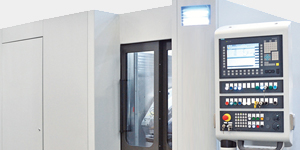The oxygen (carbon) probe used in heat treating steel
Since the 1980s, the oxygen (carbon) probe has become a mainstay in steel heat treating, providing accurate and real-time monitoring of furnace atmosphere used...
Troubleshooting inadequate properties in heat-treated steel – IV
This is the fourth in a series of articles on troubleshooting issues related to heat treating steel.
In the previous column, I discussed the...
Troubleshooting deficient properties in heat-treated steel — III
This is the third in a series of articles on troubleshooting issues related to heat treating steel.
In the previous column, I discussed the furnace...
Troubleshooting inadequate properties in heat treated steel – Part II
≈ This is the second in a series of articles on troubleshooting issues related to heat treating steel.
In the previous column, I discussed...
Troubleshooting inadequate properties in heat-treated steel – Part I
Often, the heat treater is confronted with low properties (hardness or tensile properties) in a part or heat-treated load. Determining the root cause of...
Contamination effects on cooling curve behavior of polymer quenchants
Polymer quenchants are commonly used for induction hardening, aluminum heat treating, and open tank heat treatment of steel. Contamination is always a problem. Dirt...
Distortion and residual stress development during quenching
In this column, I will discuss the different types of precipitation hardening stainless steels and discuss their physical metallurgy.
Introduction
The problem of distortion is universal...
Effects of prior microstructure on distortion
In this column, I will discuss the effects prior microstructure plays in the distortion response during heat treatment.
Introduction
In the typical manufacturing process to manufacture...
Filtration for oil and polymer quenchants
In this column, I will discuss the different types of filtration that are available for cleaning oil and polymer quenchants.
Introduction
As an oil is used,...
The meta-stable microstructure of martensite
In this column, we will discuss martensite and its formation.
Heat treating steel involves heating the component into the austenite range. Once the part is...
Polymer quenchants – Sodium Polyacrylate (ACR)
In previous columns, I discussed three different types of polymer quenchants: PAG, PEOX, and PVP. In this column, I will discuss the use of...
Polymer quenchants – polyvinyl pyrrolidone (PVP)
Fourth in a series > Polymer quenchants, first introduced in the 1970s, have captured an increasingly large market share of quenchants at the expense of oil...
Polymer quenchants – polyethyl oxazoline (PEOX)
Third in a series » Polymer quenchants, first introduced in the 1970s, have captured an increasingly large market share of quenchants at the expense of...
Polymer quenchants – polyalkylene glycol quenchants
Second in a series > Polymer quenchants, first introduced in the 1970s, have captured an increasingly large market share of quenchants at the expense of...
Polymer quenchants for steel heat treatment
Polymer quenchants, first introduced in the 1970s, have captured an increasingly large market share of quenchants at the expense of oil quenchants. In a...
Microbiological contamination and biostability in polymer quenchants
Biological issues such as bacteria and fungi can be a major issue when using polymer quenchants. Bacteria and fungi float in the air. When...
Determining the minimum cooling rate required for quenchants
In this column, I will illustrate a method to determine if a cooling rate from a cooling curve is adequate to achieve required properties.
Introduction
When...
Calculating quench tank size for continuous furnaces
When measuring the temperature rise of an unheated quench tank, the equation used to determine the size of a quench tank is:
Where Mm is...
Sizing tanks for batch immersion quenching
In this column, I will demonstrate how to calculate the size of a quench tank used for batch immersion quenching.
Introduction
The size of a batch...
Determining equivalent concentration for polymer quenchants
In this column, I will discuss a method to determine equivalent concentration when selecting alternative quenchants using the Segerberg Hardening Power (HP) for polymer...



















